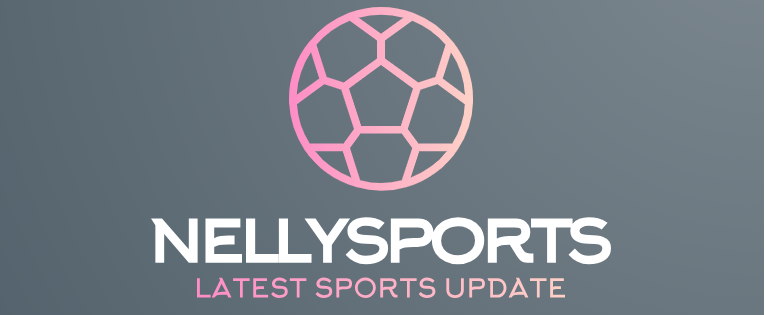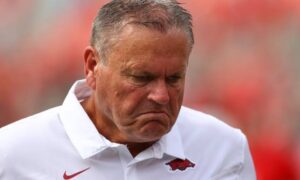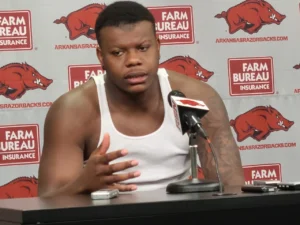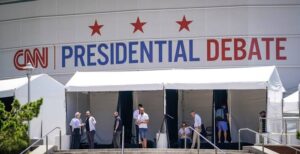Corporate sponsorships OK’d on college football fields
FAYETTEVILLE — Corporate logos have encircled college football stadiums for years.
Now they are making their way to field level.
On Thursday, the NCAA Playing Rules Oversight Panel approved the addition of sponsorship logos on football fields beginning with the 2024 season. The NCAA’s football rules committee previously recommended the change.
According to a news release announcing the decision, corporate advertisements can be placed at the 50-yard line, as well as two smaller advertisements that flank the midfield logo for a total of three corporations per field. The advertisements can be sold on a game-by-game or season-long basis.
Corporate advertisements have previously been allowed on the fields for bowl games at neutral-site stadiums. This extends that line of thinking to campus and to regular-season games.
Arkansas athletics director Hunter Yurachek said last week he was in favor of the proposal.
“To put a logo opposite the SEC logos, that generates some additional sponsor revenue,” Yurachek said at SEC Spring Meetings in Miramar Beach, Fla. “That would be something that I would definitively support.”
In addition to field-level sponsorships, Arkansas will shop this summer for a Razorback Stadium sponsorship. Naming rights for the late media mogul Donald W. Reynolds expire June 30.
Yurachek said last week that a plan is in place but no naming rights have been sold. He previously said naming rights would be shopped for $3.5 million to $4 million per year for corporations, and higher amounts for individual donors.
Corporate influence has increased in college sports in recent years, and the latest ruling might accelerate that growth. Football stadiums at Kentucky and Vanderbilt have been named for a grocery chain and a bank, respectively, within the past decade.
“I grew up near Syracuse, New York, so [I] was accustomed to the Carrier Dome, which is [now] the JMA Wireless Dome,” SEC commissioner Greg Sankey said last week. “So this is not new within the college sports enterprise. We’ve had clear lines, so it hasn’t been appearing on the field or the floors. We’ve had jersey patches in bowl games. I would anticipate there’s going to be a continuing push of those limits, and we’re going to have to come to some sort of agreement in this new environment on where those limits exist.”
Revenue growth is paramount as programs grapple with the impending House v. NCAA settlement that could cause power programs to pay around $20 million per year to their athletes.








